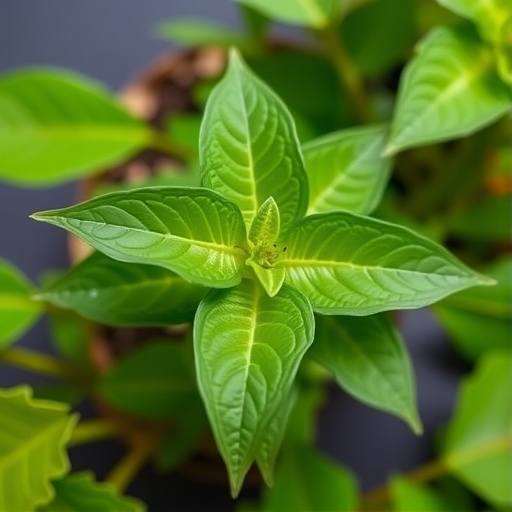Credit: University of Utah Health
Although moderately mobile, marine cone snails have perfected several strategies to capture prey. Some fish-hunting species release venom into the surrounding water. Within the plume of toxic venom, the fish succumbs to fast-acting insulin that renders it immobile. As the fish flounders, the snail emerges from its shell to swallow the pacified victim whole.
Researchers at University of Utah Health detailed the function of cone snail insulins, bringing them one step closer to developing a faster-acting insulin to treat diabetes. The results of the study are available in the February 12 issue of the journal eLife.
“These snails have developed a strategy to hit and subdue their prey with up to 200 different compounds, one of which is insulin,” said Helena Safavi-Hemami, Ph.D., assistant professor of Biochemistry at U of U Health and senior author on the paper. “Every now and then, we learn something unique from nature and millions of years of evolution.”
Insulin, a hormone produced by the pancreas to regulate blood sugar, consists of two segments called A and B chains. The B cluster forms dimers and hexamers that allow the pancreas to store the hormone for later use. This segment is also necessary to activate the insulin receptors that signal the body to take up sugar from the blood. Insulin must undergo several conversions to decluster before it can lower blood sugar.
A person with type 1 diabetes is unable to produce insulin and requires daily injections to manage their blood sugar. Despite decades of research, the manufactured insulin continues to contain the B chain in order to activate the receptor to lower blood sugar, delaying the drug’s effect by 3090 minutes.
Safavi-Hemami and her team examined the function of seven insulin sequences found in the venom from three species of cone snailConus geographus, C. tulipa and C. kinoshitai. Unexpectedly, each species produces insulin with slightly different structures. Despite these differences, each insulin is fast-acting because it lacks the sticky part of the B chain found in human insulin.
“Evolution may be the driving force to increase the molecular diversity of the toxin molecules that the cone snail species use for hunting prey,” said Danny Hung-Chieh Chou, Ph.D., assistant professor of Biochemistry at U of U Health and a co-author on the paper.
The team tested how each of the insulin sequences lowered blood sugar in zebrafish and mice. The model animals were treated with streptozotocin to induce symptoms of type 1 diabetes before the animals were dosed with the different synthesized insulins.
Safavi-Hemami found three of the venom-generated insulin sequences (Con-Ins T1A from C. tulipa, Con-Ins G1 from C. geographus and Con-Ins K1 from C. kinoshitai) lowered blood sugar effectively. Using cell lines, they found the cone snail insulin sequences were able to bind to and activate the human insulin receptor, despite missing the part of the B chain found in human insulin. These sequences, however, are 10 to 20 times less potent than human insulin.
According to Safavi-Hemami, each unique configuration provides the research team a slightly different template to consider when designing new drugs that act quickly and effectively.
“We are beginning to uncover the secrets of cone snails,” said Safavi-Hemami. “We hope to use what we learn to find new approaches to treat diabetes.”
###
Safavi-Hemami and Chou were joined on this project by Peter Ahorukomeye, Maria Disotuar, Joanna Gajewiak, Santhosh Karanth, Maren Watkins, Samuel Robinson, Paula Florez Salcedo, Amnon Schlegel, Baldomero Olivera and Danny Hung-Chieh Chou at the U and U of U Health; Nicholas Smith and Brian Smith at La Trobe University, Melbourne; and Briony Forbes at Flinders University, South Australia. The work, titled Fish-hunting cone snail venoms are a rich source of minimized ligands of the vertebrate insulin receptor, was supported by a Margolis Foundation, the Juvenile Diabetes Research Foundation, the National Institutes of Health (R01GM122869) and the Utah Science and Technology Initiative.
University of Utah Health is the state’s only academic health care system, providing leading-edge and compassionate medicine for a referral area that encompasses 10% of the U.S., including Idaho, Wyoming, Montana and much of Nevada. A hub for health sciences research and education in the region, U of U Health touts a $291 million research enterprise and trains the majority of Utah’s health care professionals at its Schools of Medicine and Dentistry and Colleges of Nursing, Pharmacy and Health. Staffed by more than 20,000 employees, the system includes 12 community clinics and four hospitals — University Hospital; University Neuropsychiatric Institute; Huntsman Cancer Hospital; and the University Orthopaedic Center. For eight straight years, U of U Health has ranked among the top 10 U.S. academic medical centers in the rigorous Vizient Quality and Accountability Study, including reaching No. 1 in 2010 and 2016.
Media Contact
Stacy W. Kish
[email protected]
801-587-2596




